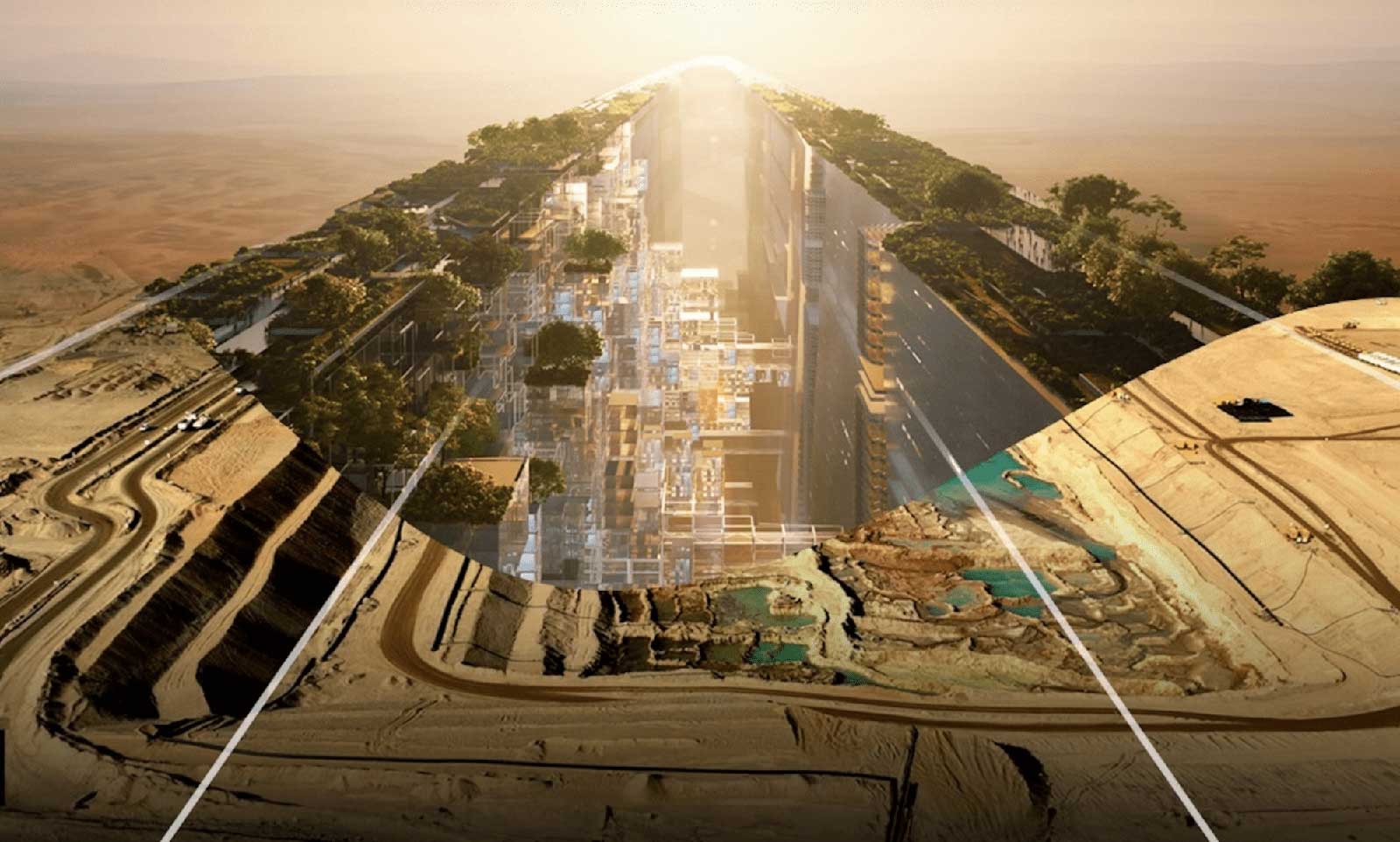Neom, Saudi Arabia’s ambitious $500-billion futuristic megacity, was envisioned as the cornerstone of Crown Prince Mohammed bin Salman’s Vision 2030—a transformative plan to diversify the kingdom’s economy beyond oil. However, reports suggest that the project is spiraling into a financial crisis, with projected costs potentially reaching a staggering $8.8 trillion by 2080.
As Neom’s budget escalates and execution challenges mount, doubts are growing about the project’s feasibility and sustainability. This article delves into the key factors contributing to Neom’s financial turmoil, its economic implications, and what the future holds for Saudi Arabia’s dream city.
Neom: A Visionary Project With Skyrocketing Costs
Launched in 2017, Neom was planned as a high-tech utopia featuring groundbreaking innovations such as flying cars, robot dinosaurs, an artificial ski resort, and a floating business district. The project was marketed as a game-changer that would revolutionize urban living and technological advancement in Saudi Arabia and beyond.
However, recent reports from the Wall Street Journal reveal that the project’s cost estimates have skyrocketed far beyond the original $500-billion budget. According to insiders, the overall expenditure could reach $8.8 trillion by 2080—approximately 25 times Saudi Arabia’s annual budget.
So far, the kingdom has invested around $50 billion into Neom, but progress has been slow. Even the first phase of the project requires an estimated $370 billion, raising serious concerns about financial sustainability.
Key Challenges Facing Neom
Unrealistic Projections and Financial Strain
The initial projections for Neom were highly ambitious. The expectation of attracting large-scale foreign investment has not materialized at the anticipated pace, leading to financial strain on the Saudi government.
Soaring Construction and Labor Costs
With the scale of Neom’s vision, the costs of construction materials, labor, and advanced technologies have surged dramatically. The harsh desert environment also requires extensive infrastructure development, adding to budget overruns.
Delays and Slow Execution
Despite Neom being a flagship project under Saudi Vision 2030, progress has been significantly slower than expected. The complexity of the project, bureaucratic hurdles, and logistical challenges have led to frequent delays, raising concerns about its completion timeline.
Limited Private Investment
The Saudi government hoped to secure substantial private and international investment to finance Neom. However, many investors remain skeptical due to the project’s high costs, uncertain returns, and geopolitical concerns.
Public Debt and Economic Pressure
With oil revenues fluctuating and Saudi Arabia investing heavily in megaprojects, Neom’s financial burden could put additional strain on the country’s economy. If the government continues to finance Neom primarily through state funds, it could increase national debt significantly.
Economic and Political Implications
Impact on Saudi Arabia’s Economy
The massive cost overrun could disrupt Saudi Arabia’s economic plans. If Neom fails to deliver expected returns, it could drain national resources, affecting other critical sectors such as healthcare, education, and infrastructure development.
Global Perception and Investor Confidence
Foreign investors may become hesitant to commit to large-scale projects in Saudi Arabia if Neom is perceived as an unsustainable financial risk. This could impact the kingdom’s long-term plans for economic diversification and technological innovation.
Potential Revisions and Downsizing
Given the financial hurdles, Saudi authorities may need to scale back Neom’s scope, prioritize certain phases, or seek alternative funding mechanisms, such as public-private partnerships or sovereign bonds.
The Future of Neom: What Lies Ahead?
Despite mounting challenges, Saudi Arabia remains committed to the Neom vision. The government continues to promote Neom as a revolutionary urban project, but financial restructuring and realistic planning may be necessary to keep it viable.
Experts suggest that a phased approach—focusing on key aspects like The Line (the linear smart city within Neom) and sustainable energy projects—could help mitigate financial risks. Additionally, fostering investor confidence through transparency and viable economic policies will be crucial.
Conclusion
Neom was introduced as a symbol of Saudi Arabia’s ambitious transformation under Vision 2030. However, its financial crisis, cost overruns, and slow progress have raised serious concerns about its feasibility. With estimated costs reaching $8.8 trillion, the megacity’s future hinges on realistic financial planning, strategic execution, and securing global investor trust.
Saudi Arabia now faces a crucial crossroads—either recalibrate Neom’s vision to align with economic realities or risk it becoming one of the costliest failed megaprojects in history. Whether Neom will eventually emerge as a futuristic success or a financial disaster remains to be seen.
YAllA TV – www.yallatv.ae





